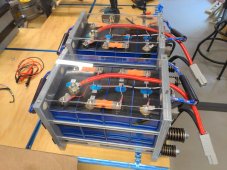robwolff3
How do you turn this thing on?
- Joined
- Oct 12, 2021
- Messages
- 42
I have 8 EVE LF280K LiFePo4 cells configured in two packs of 4 cells to make 12v battery packs for my RV. They each also have a 150A JBD BMS protecting them. I left them in my RV after a trip hooked up with no large loads, just a few constantly running electronics in the RV that make up a low draw parasitic load. Today I went to put the charger on them to get them to a storage SOC and disconnect them. Both packs were at 5v ?. I am still trying to figure out how they were able to get so discharged. My best estimation is that they were at this voltage for a day or two. They look fine physically, no bloating.
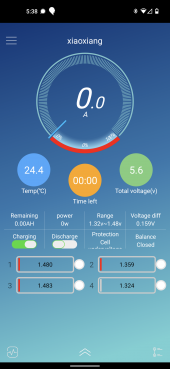
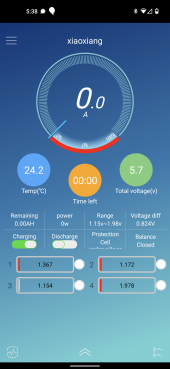
Measuring the voltage manually with my volt meter, each cell was at:
As mentioned in other threads Im going to start reading up on LiFePO4 dendrite formation. Seems given the short circuit risk people wont put cells anywhere they dont want to risk getting burned down.
Not sure why they BMS didnt cut them off at 12v. The only thing I can think of, sometimes I will connect the bluetooth module to the serial connection, but in my RV I have a serial to USB adapter connected to the JBD bms to monitor them with a raspberrypi. Maybe the USB serial connection overrides the BMSs normal function or parameters? Here are the settings:
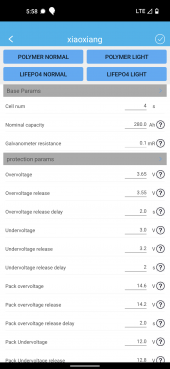
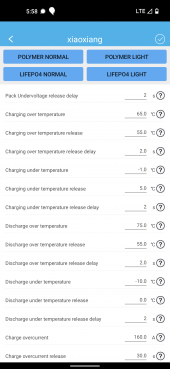


Here is them coming up to 10v:

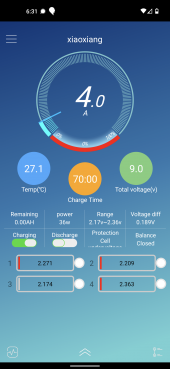
Any advice on recovering them and using them in the future would be appreciated.
Thank you,
Rob


Measuring the voltage manually with my volt meter, each cell was at:
- 1.25
- 1.09
- 1.00
- 1.87
- 1.40
- 1.28
- 1.40
- 1.24
As mentioned in other threads Im going to start reading up on LiFePO4 dendrite formation. Seems given the short circuit risk people wont put cells anywhere they dont want to risk getting burned down.
Not sure why they BMS didnt cut them off at 12v. The only thing I can think of, sometimes I will connect the bluetooth module to the serial connection, but in my RV I have a serial to USB adapter connected to the JBD bms to monitor them with a raspberrypi. Maybe the USB serial connection overrides the BMSs normal function or parameters? Here are the settings:




Here is them coming up to 10v:


Any advice on recovering them and using them in the future would be appreciated.
Thank you,
Rob



